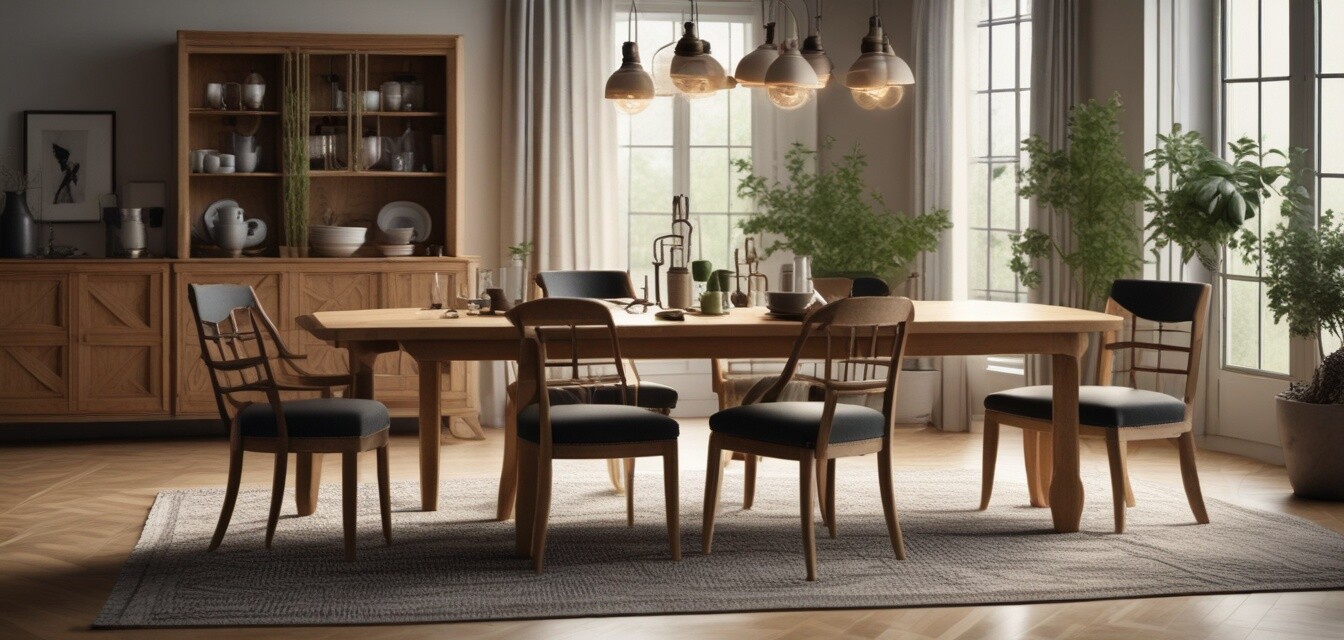
The role of solid oak furniture in eco-friendly interior design
Key Takeaways
- Solid oak furniture is a sustainable choice due to its durability and renewability.
- Natural materials like solid oak contribute to healthier indoor environments.
- Eco-friendly design emphasizes minimalism, functionality, and timeless aesthetics.
- Consumer trends are shifting towards sustainably sourced materials.
- Investing in solid oak furniture can have a long-term positive impact on the environment.
As the world grows more aware of environmental issues, eco-friendly interior design has emerged as a significant trend. Solid oak furniture plays a crucial role in this movement, offering sustainable, durable, and aesthetically pleasing options for those looking to enhance their living spaces.
Understanding solid oak furniture
Solid oak furniture is renowned for its robustness and longevity. Oak trees are among the most durable hardwoods, making furniture crafted from their timber a wise investment that can last for generations.
Advantages of solid oak
- Durability: Solid oak furniture withstands wear and tear, offering value for money in the long run.
- Natural beauty: The aesthetic appeal of solid oak is unmatched, with distinct grains and warm tones that complement various decor styles.
- Sustainable sourcing: When sourced responsibly, oak contributes to sustainable forestry practices.
Eco-friendly materials and their impact
Choosing eco-friendly furniture reflects a commitment to environmental preservation. Solid oak, being a natural material, ensures that indoor spaces are free from harmful chemicals and VOCs (volatile organic compounds) often found in synthetic products.
The importance of sustainable sourcing
| Material | Sustainability Rating | Durability | Health Impact |
|---|---|---|---|
| Solid Oak | High | Very durable | Low (non-toxic) |
| Plywood | Medium | Moderate | Medium (may contain adhesives) |
| Particle Board | Low | Low | High (contains formaldehyde) |
Designing with solid oak
Integrating solid oak furniture into your home can create a harmonious and aesthetically pleasing environment. Here are some popular design tips:
Beginner tips for eco-friendly design
- Choose multifunctional furniture pieces, such as a solid oak dining table that can double as a workspace.
- Incorporate natural elements like plants to complement the warm tones of oak.
- Opt for a minimalistic approach to declutter spaces, allowing the beauty of solid oak to shine.
- Consider handmade or locally sourced furniture to support small businesses and craftsmanship.
Current trends in eco-friendly design
The popularity of solid oak furniture reflects broader trends in the interior design industry. Let's explore these trends:
- Renewable resources: Consumers are increasingly drawn to items made from renewable materials like solid oak.
- Timeless aesthetics: The natural elegance of solid oak ensures that furniture remains stylish despite changing trends.
- Minimalism: Eco-friendly design often embraces a minimalist approach, focusing on quality over quantity.
Conclusion
Investing in solid oak furniture not only enhances your home aesthetics but also aligns with sustainable living practices. As consumers become more conscious of their environmental impact, solid oak emerges as a favorite for those looking to create stylish, eco-friendly interiors.
Pros
- Long-lasting and durable
- Timeless design and natural beauty
- Eco-friendly and sustainable
Cons
- Can be more expensive than synthetic alternatives
- Requires proper care and maintenance to preserve quality
Explore More About Solid Oak Furniture
To further delve into the world of solid oak furniture, check out our other articles: